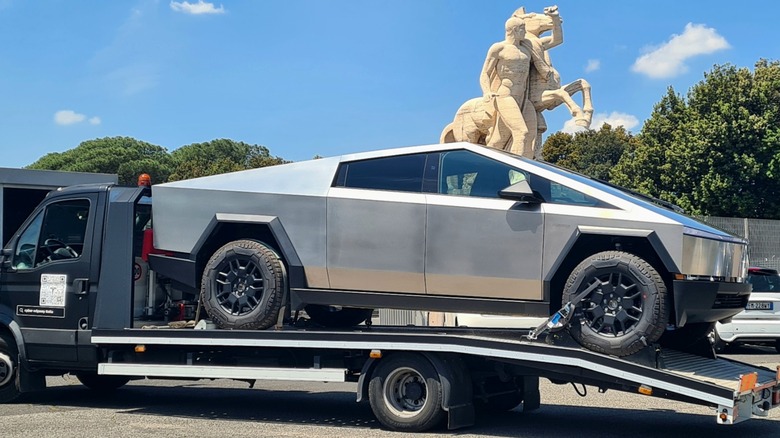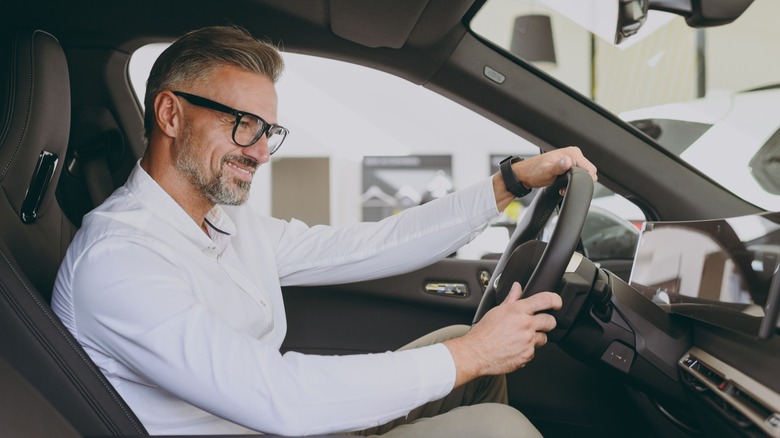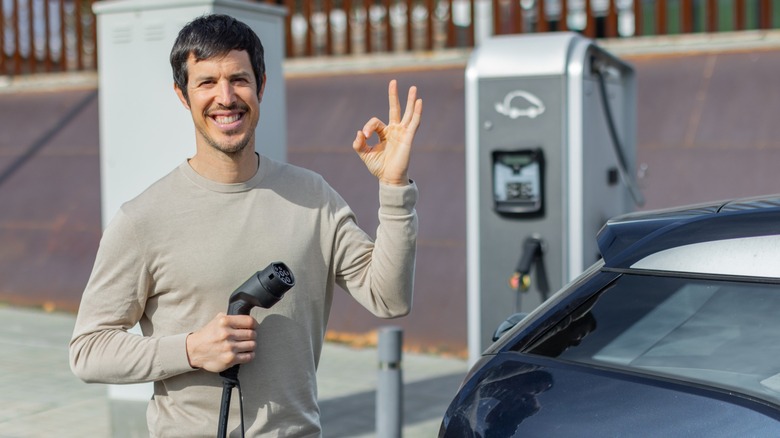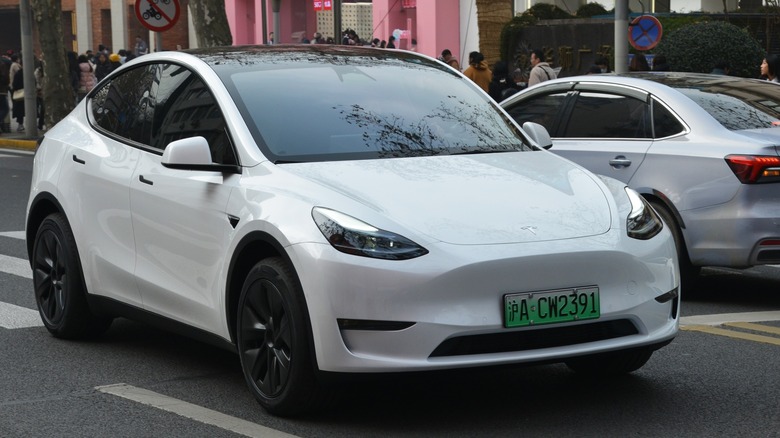Will Towing An EV Actually Charge It?
As electric cars become more common, many drivers are naturally curious about how to manage their battery, especially if they're stuck with an EV that doesn't go very far on a single charge. In fact, you may have wondered if you could charge your electric car just by getting it towed. On the surface, it sounds like it could work. EVs use regenerative braking to recover energy when they slow down or coast downhill. So, if the wheels are spinning while being towed, doesn't that mean electricity is being generated?
Well, to charge an EV battery, you could plug it in at home, at work, or at a fast-charging station. But when you're on the road, regenerative braking lends a hand. It recaptures some of the energy that would've been lost when you slow down and sends it back into the battery, giving you an extra boost in range.
However, towing isn't the same as driving. And as more people buy EVs, it's important to understand what they can and can't do. Automakers have clear warnings about how their EVs should be towed. In fact, towing an EV the wrong way can do more harm than good. In this article, we'll break down the science behind regenerative braking. We'll explore how much energy towing could potentially generate, whether this could damage your vehicle's drivetrain, and what better alternatives there are for when you find yourself stranded with a completely discharged battery.
How does regenerative braking work?
Regenerative braking is an important part of this conversation. To understand whether towing can charge an EV, you first need to get how this technology works. In conventional vehicles with internal combustion engines, hitting the brakes turns kinetic energy into heat through friction. So when the brake pads clamp down on rotors, all that energy just disappears, but electric vehicles do something much smarter.
When you ease off the accelerator in an EV, the motor flips roles and acts like a generator. Here's the basic science: as the car coasts and the wheels keep spinning, that momentum drives the motor in reverse, which in turn creates an electromagnetic force. That force pushes electricity back into the battery, basically reclaiming energy that would otherwise be wasted. And depending on how you're driving, you can adjust how strong that regenerative effect is. On the highway, you might want it lighter. In stop-and-go traffic, stronger regen helps you recover more energy each time you slow down.
Now, to be clear, EVs still have traditional brakes. The car blends regenerative and friction braking automatically, and the best systems do it so smoothly you barely notice. Regenerative braking tends to be more efficient at higher speeds. At lower speeds, the system leans more on the physical brakes because there's not enough kinetic energy to work with.
Still, regenerative braking isn't a perfect system. It's not 100% efficient. You lose a chunk of energy as heat, through friction, and more from basic electrical resistance. There's only so much energy the system can capture, and that's why towing an EV to try to "charge it" isn't the genius life hack it might sound like.
Will towing an EV charge it?
If you flat-tow an electric vehicle with all four wheels on the ground, the spinning wheels can activate the regenerative braking system. From the car's perspective, there's not much difference between rolling, coasting, or being pulled. In all cases, the motor can act like a generator, sending electricity back into the battery.
But there are some caveats. First, the battery must contain enough charge to be functional. If your EV is completely dead, towing won't help. That's because the car needs power to switch into drive mode and engage the motor for regeneration. If it's in neutral, or if the battery's totally drained, you won't be generating anything.
Second, this isn't easy towing. EVs are heavy, and when regen kicks in, it adds a kind of built-in resistance, like dragging something with the brakes half-applied. You'd need a powerful tow vehicle, a heavy-duty strap, and solid coordination between both drivers to pull this off without straining the drivetrain or causing an accident.
According to manufacturers like Ford and Lucid, the charging rates achieved through towing can be surprisingly significant. Ford says the Mustang Mach-E and F-150 Lightning can pull in about 9.2 kW while being towed at low speeds. Lucid's tests show even higher numbers; the Air sedan produces around 100 kW when towed at 20-30 mph and up to 200 kW at highway speeds, matching the range of some Level 3 fast chargers.
But here's the thing: that kind of efficiency only works under very specific conditions. In most real-life scenarios, things like traffic, terrain, and weather can lower those numbers fast.
Should you charge your vehicle with this method?
While it's technically possible to charge your electric vehicle by towing it, we strongly advise against this method except in the most desperate circumstances. The potential risks far outweigh the benefits in nearly every scenario. These dangers include tow-strap breakage, which could cause dangerous recoil or road hazards, and potential collisions between the towing and towed vehicles if coordination fails. There's also uncertainty about how the EV's electronic systems might respond to being towed; they could potentially report faults or enter safety modes that complicate the process.
Fortunately, the emergence of bi-directional charging offers a much safer alternative for emergency situations. Newer EV models, including the Rivian R1T and R1S, Lucid Air, and Ford F-150 Lightning, support this technology, allowing them to share power with other compatible electric vehicles. These vehicles come equipped with special cords featuring the CCS Combo 1 charging plug on both ends, enabling direct vehicle-to-vehicle charging.
However, in the most desperate scenarios where there is no available outlet and no compatible charging vehicles to come to your aid, manufacturers like Rivian offer some specific guidance if you must resort to tow charging. Starting the vehicle in neutral before shifting to drive can help bypass the automatic hold feature that might complicate towing. Use cell phones or walkie-talkies to coordinate movements, particularly when starting, stopping, or changing speed. Ensure to only tow for the minimum distance necessary to reach a proper charging station.
Remember, while the idea of tow charging your EV might be interesting, it's not a practical solution. The risks to your vehicle outweigh the minimal charging benefits you might receive. For now, your best bet is still good old-fashioned planning and using the growing network of charging stations available to EV drivers.



